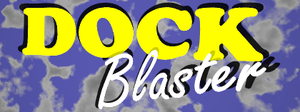DOCK Blaster
DOCK Blaster is a free-to-use service for running docking screens, on the web at http://blaster.docking.org. **DOCK Blaster is currently in beta test, so you should contact John Irwin for access until it becomes public**
What you need to start
To use DOCK Blaster you will need the structure of a protein target and an indication of the binding site you wish to target. There are two ways to do this:
- If your target is in the PDB, you may simply specify the PDB code, in the Parser.
- If your target is not in the PDB, or you edited a PDB file, use the Preparer.
- Upload the target in PDB format (preferred) or mol2 format
- Specify the binding site using
- a docked ligand in mol2 format (preferred) or
- "hot spots", in PDB format
- atoms of residues forming the binding site, the center of inertia of which should be where you expect the ligand to go.
If you do not have a particular target in mind and are simply curious about DOCK Blaster, you may select "I'm feeling lucky", and we will pick a target for you from the PDB. To try one of the examples featured in our (forthcoming) DOCK Blaster paper, consult the sample data.
Preparation
Calculation
Interpretation
Other topics
To cite DOCK Blaster, please reference Irwin et al., "Benchmarking Sets for Molecular Docking", manuscript in preparation.
Help
For help with DOCK Blaster, please join and write to the DOCK Blaster mailing lists [1]. We welcome your feedback about DOCK Blaster. Please send bug reports to support at docking.org. Please send opinions to comments at docking.org.
Versions
Work on DOCK Blaster began in the fall of 2000. The first web-based interface became available locally in 2003. We started selective pre-alpha testing in 2006, alpha testing with external users in 2007, and wide-spread beta testing in 2008.
DOCK Blaster 1.0 will be released when the paper is published in 2009.
